

DNA Helix Pencil Holder by Jimbotron. This is a "two parts in one print" design with no raft or supports needed.

Print the "DNA_Helix_Pencil_Holder_Full_06.stl" STL fileAfter print, remove two parts from print bed. a. bottom of helix is outer print b. top of helix is inner print. (Optional) Use "DNA_Helix_Pencil_Holder_Optional_U_Snaps.stl" x 2 on the outside of the helix to secure the top and bottom parts together. These are pressure-fit snaps that fit on the outside of the Helix. Why our smartest students are failing math. As sure as one plus one equals two, it happens year after year.
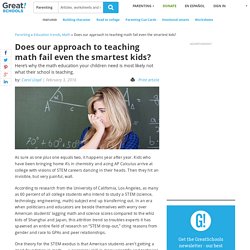
Kids who have been bringing home A’s in chemistry and acing AP Calculus arrive at college with visions of STEM careers dancing in their heads. Then they hit an invisible, but very painful, wall. According to research from the University of California, Los Angeles, as many as 60 percent of all college students who intend to study a STEM (science, technology, engineering, math) subject end up transferring out.
In an era when politicians and educators are beside themselves with worry over American students’ lagging math and science scores compared to the whiz kids of Shanghai and Japan, this attrition trend so troubles experts it has spawned an entire field of research on “STEM drop-out,” citing reasons from gender and race to GPAs and peer relationships. Want to Start a Makerspace at School? Tips to Get Started. As the Maker Movement starts to gain momentum, schools that are trying to find ways to foster the do-it-yourself environment can learn a few lessons from another nexus in the universe: public libraries.
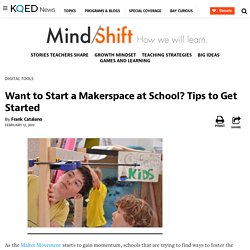
Dale Dougherty, founding editor and publisher of Make Magazine — and the de facto leader of the Maker Movement — has a vision to create a network of libraries, museums, and schools with what he calls “makerspaces” that draw on common resources and experts in each community. Libraries and museums, he said, are easier places to incorporate makerspaces than schools, because they have more space flexibility and they’re trying to attract teens with their programs.
“Schools have already got the kids,” Dougherty noted wryly, at the recent American Library Association Midwinter Meeting in Seattle. Can Project-Based Learning Close Gaps in Science Education? Putting kids to work on meaningful projects can transform classrooms into beehives of inquiry and discovery, but relatively few rigorous studies have examined how well this teaching method actually works.

An encouraging new report describes preliminary, first-year outcomes from a study of 3,000 middle school students that shows kids can, in fact, learn more in science classrooms that adopt a well-designed, project-focused curriculum. When researchers analyzed test scores from those classrooms by students’ gender and ethnicity, there were no differences in learning performance. That’s a preliminary indication that high-quality project-based curricula might be able to help narrow the science education achievement gap in children from low-income backgrounds or other groups that are underrepresented in STEM fields.
How well the benefits hold up or grow in the second year of implementation remains to be seen. 10 Innovative Ways to Bring STEM to Schools. Freebies for Science Teachers. GeneEd Added: Jul 14, 2017 Revisit the National Library of Medicine’s GeneEd for new resources.
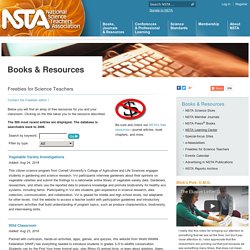
Targeted primarily for high school students and teachers, the website offers genetics education resources organized by Topics, Labs, Teacher Resources, Career Information, and Highlights (news). Grizzly Bears: Ready for Delisting? As part of this STEM conservation lesson plan, students use real-world data to answer this question: “Are grizzly bears ready for delisting?”

Free! Targets students in grades 9-12Aligned with Next Generation Standards, Common Core State Standards, NSES National Science Standards, and NCTM National Math StandardsTeachers don’t need to know anything about grizzly bears to use this lessonIncludes: Introductory Video (look to the right —->)Teacher GuideStudent PagesAnswer KeyResults Show This lesson follows a flipped learning model where teachers don’t stand before the class and lecture. Instead, students become grizzly bear scientists and “discover” the answers to real-world research questions through scientific inquiry.
All Courses. All Courses. Homepage : StemTeachingTools. About RocketSTEM - RocketSTEM. Free Online Tech eBooks. Welcome to the iD Library We present a series of free online eBooks for kids and teens interested in pursuing STEM (Science, Technology, Engineering, and Math) careers.
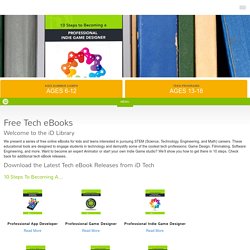
These educational tools are designed to engage students in technology and demystify some of the coolest tech professions: Game Design, Filmmaking, Software Engineering, and more. Want to become an expert Animator or start your own Indie Game studio? We’ll show you how to get there in 10 steps. Check back for additional tech eBook releases. Download the Latest Tech eBook Releases from iD Tech. NEA Foundation Global Learning Fellows Lesson Plans. Kathryn Woerner - 1960s Reform Around the WorldResources: 1 9th Grade/US History: “1960s Reform Around the World” can be a stand-alone lesson, a lesson embedded in a 1960s Civil Right unit or a culmination activity of a study on reform.
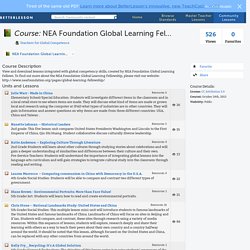
The idea of reform is not isolated to the American experience and can easily be made global by broadening the study beyond US borders to include people living in the same time trying to make a difference in their lives. The 1960s was a time of widespread protests and police restraints as well as shootings, executions and massacres around the world. Adventurelearning - Free adventure learning for the classroom. The Air Force Collaboratory.